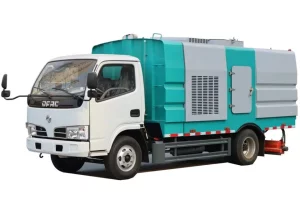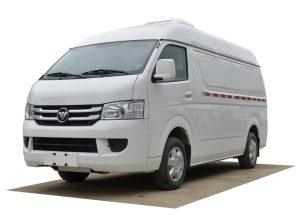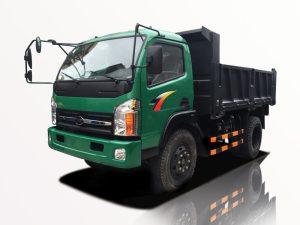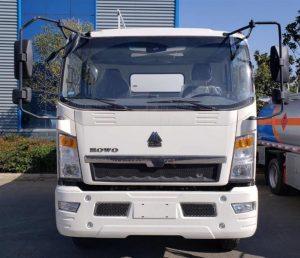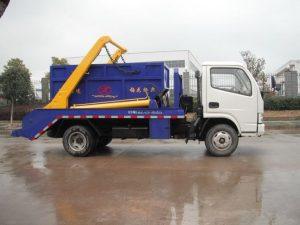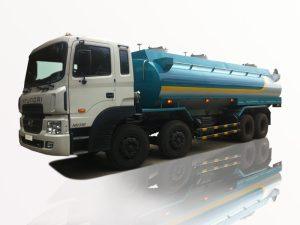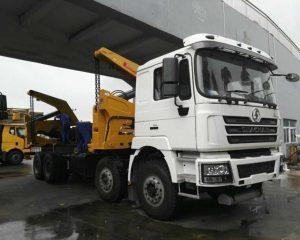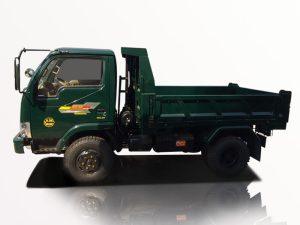Monday to Saturday - 8:00 -17:30
Boom Truck vs Crane: Comprehensive Comparison Guide
When it comes to lifting and moving heavy materials in construction and other industries, boom trucks and cranes are commonly employed tools. Both serve a similar purpose, but they differ greatly in design, functionality, and suitable applications. In this comprehensive guide, we’ll explore the differences, advantages, and disadvantages of boom trucks and cranes, helping you to make an informed choice based on your specific needs.
What is a Boom Truck?
A boom truck, also known as a bucket truck or cherry picker, is a versatile vehicle equipped with a hydraulic arm that extends to lift materials or personnel to elevated heights. Its design combines the capabilities of a truck and a crane, making it highly effective for a variety of tasks.
Components of a Boom Truck
- Base Vehicle: Typically, a boom truck uses a standard truck chassis for mobility.
- Hydraulic Boom: The arm that can extend upward and often includes a bucket for lifting workers.
- Bucket: The platform where workers stand while performing jobs at height.
- Control System: Used to operate the boom’s movements accurately.
Common Uses of Boom Trucks
Boom trucks are particularly useful in various industries, including:
- Tree trimming and maintenance
- Utility work, such as power line repairs
- Telecommunications for installing and servicing antennas
- Construction sites for reaching difficult areas
What is a Crane?
A crane is a machine that is designed to lift and lower heavy loads. It’s generally more complex and capable of handling far heavier weights than a boom truck. Cranes come in many varieties, each suited for specific types of jobs and environments.
Types of Cranes
- Mobile Cranes: Easily transportable; can be moved to various locations.
- Tower Cranes: Used in tall building construction; provides height and stability.
- Crawler Cranes: Have tracks for stability and can move on construction sites.
- Overhead Cranes: Fixed cranes that can lift materials inside large warehouses.
Common Uses of Cranes
Cranes are generally used in industries such as:
- Construction for lifting heavy materials like steel beams and concrete
- Shipping ports for loading and unloading cargo ships
- Manufacturing plants for lifting heavy equipment
Key Differences Between Boom Trucks and Cranes
| Feature | Boom Truck | Crane |
|---|---|---|
| Weight Capacity | Generally up to 5 tons | Can exceed 100 tons |
| Mobility | High mobility; can operate on roads | Less mobile; requires heavy-haul trucks for transport |
| Height Reach | Typically 30 to 50 feet | Can reach several hundred feet, depending on type |
| Operational Complexity | Easy to operate | Requires trained operators |
| Applications | Ideal for light work; maintenance tasks | Designed for heavy lifting in construction |
Advantages of Boom Trucks
Versatility in Application
Boom trucks can be used in a wide range of settings, from urban areas to industrial sites, making them ideal for light to moderate lifting tasks.
Ease of Operation
Operators typically find boom trucks easier to handle, especially when it comes to reaching moderate heights quickly and efficiently.
Disadvantages of Boom Trucks
Weight Limitations
With a limited weight capacity, boom trucks may not be suitable for more substantial lifting tasks.
Height Limitations
While practical for many applications, boom trucks generally have a shorter reach compared to cranes.
Advantages of Cranes
Heavy Lifting Capability
Cranes excel in lifting heavy loads that would be well beyond the capabilities of a boom truck.
Height and Reach
Cranes can be designed to reach impressive heights, making them necessary for high-rise construction.
Disadvantages of Cranes
Higher Cost
The purchase or rental cost of cranes can be significantly higher than boom trucks, making them less desirable for smaller jobs.
Operational Complexity
They often require skilled operators with certifications due to their complex features.
Choosing Between a Boom Truck and a Crane
Assess Your Requirements
Consider the weight of the load you need to lift and the height required. If you are dealing with lighter loads and shorter heights, a boom truck may suffice. However, for heavy machinery and higher elevations, a crane is your best option.
Budget Considerations
Your budget plays a significant role in your choice. If cost is a significant factor, assess rental options, and avoided investing in a crane when a boom truck will meet your needs.
Site Conditions
Evaluate your worksite. Boom trucks are usually more flexible on smaller sites with tight spaces, whereas cranes require more room to operate safely.
Practical Examples
Example Job for a Boom Truck
Imagine a tree trimming crew that needs to remove branches and limbs that are overhanging power lines. A boom truck would allow them to reach the necessary height while keeping the crew safe in the bucket.
Example Job for a Crane
Consider the construction of a skyscraper that requires heavy steel beams to be lifted into place. A crawler crane would provide the necessary weight capacity and height to complete this job effectively and safely.
Tips for Using Boom Trucks and Cranes Safely
For Boom Trucks
- Always inspect the equipment before use.
- Use outriggers when available for greater stability.
- Ensure workers are wearing proper safety harnesses when utilizing the bucket.
For Cranes
- Adhere to strict operational guidelines and safety protocols.
- Always have a qualified signal person when operating a crane.
- Conduct load tests periodically to ensure equipment integrity.
FAQs
1. Can I use a boom truck for high-rise building construction?
No, boom trucks typically have height limitations and are not designed for the heavy lifting required in high-rise construction.
2. What types of projects are best suited for cranes?
Cranes are ideal for large construction projects, shipping ports, and any work involving heavy machinery and materials.
3. Do boom truck operators need special training?
While formal certifications are not always required, operators should receive training on how to operate the equipment safely.
4. What is the average rental cost for a crane versus a boom truck?
Cranes can cost anywhere from $100 to over $1,000 per hour to rent depending on the type, while boom trucks typically range from $50 to $300 per hour.
5. Are there any safety risks associated with using a boom truck?
Like any heavy machinery, there are risks including falls and equipment instability; proper training and safety procedures must be followed to mitigate these dangers.
6. Can boom trucks and cranes be used interchangeably?
Not always; each has specific applications where they excel, so using the correct type for the job is crucial for safety and efficiency.


